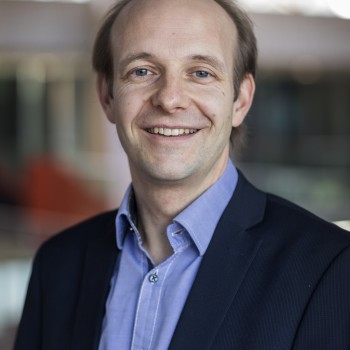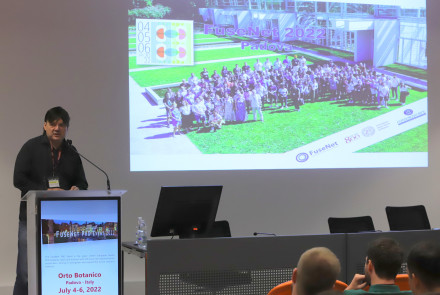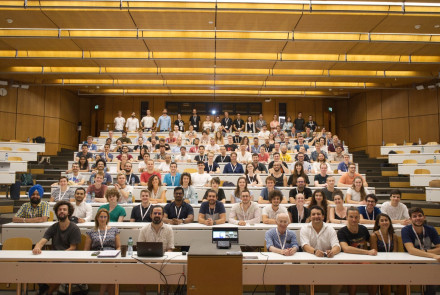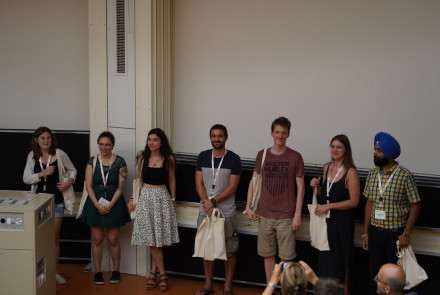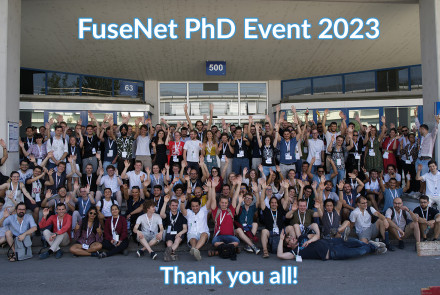Eye witness report from the 2012 FuseNet PhD event, part 3
Boring PhD student's talks, an old shady French abbey on a river, food as the only interesting thing happening all day long... if you expected that from the FuseNet PhD Event you would have been completely wrong!!
Instead, the gathering of almost 100 young people, all of them focused on fusion, was a great idea and inspirational to many of us![[{"type":"media","view_mode":"media_original","fid":"816","attributes":{"class":"media-image","id":"2","style":"float: right; margin: 10px;;;;;;","typeof":"foaf:Image"}}]]
The morning started with 5 PhD talks: all of them were very well organized both from the scientific and visual point of view. I will only say that I was very surprised by the wide range of topics and by the enthusiasm of the speakers: they brought a glimpse of future into the hall.
Towards the end of the morning, Dr. G Verdoolaege held a talk on probability theory applied to fusion research. His work showed the possibility to use pattern analysis to foresee disruptions on large fusion devices.
After a delicious lunch (food always remains interesting), a second session of PhD talks was held. One of the nice aspects of the many short presentations was that there was probably some topic related to everyone's own research. Two talks caught my attention in particular, as they relate to the subject of my own PhD study: a study about MHD self organized flows held by Mr. J. Morales and a talk on computational physics by Mr. D. Iglesias.
At the end of the day there was a job opportunity session. The session opened with a long list of scientific institutes and private industries that can offer job opportunities to fusion engineers and researchers. The overview showed us how much work will need to be done in the coming decade, in particular to complete the construction of ITER and in the design of DEMO.
Many proposal spread from this last talk. One idea born from the audience caught my attention: it would be good to have an online service to bridge the gap between students and industry. We later discovered that FuseNet plans to set up such a match-making service on its website, where all students interested in an internship, fusion-related job or scientific career can meet fusion-interested industries or research institutes.
Group Photo of the FuseNet PhD Event 2012 (click to view full-size)
There are two other useful suggestions that I would like to mention as well: the first is that a PhD student should look at where research grants are awarded. When you want to find a job, those private industries or scientific institutes may in particular be interested in hiring young scientists. Another important point that emerged was that in a fast developing field, a student always has to be ready to change its topic of study, if he really wants to stay in the advanced fusion studies.
To conclude the intense three days we had in Pont-à-Mousson, I can say that the PhD event was very interesting from a scientific point of view, but for me the main contribution laid in the connections that were formed, the networking that has helped in building a dynamic fusion community.
Marco Veranda
(photo inside the lecure room: credit to Chiara Piron, University of Padova)

